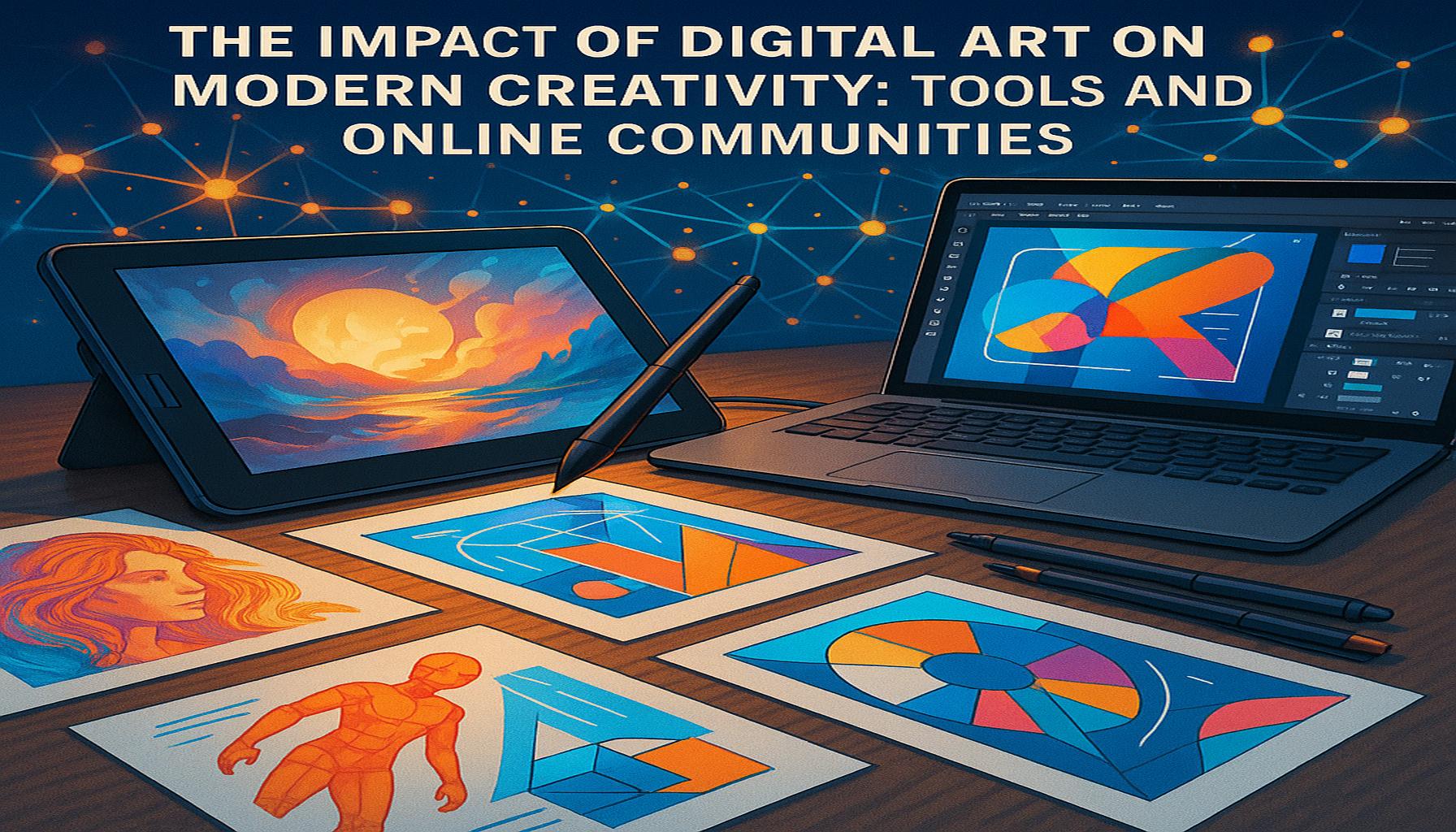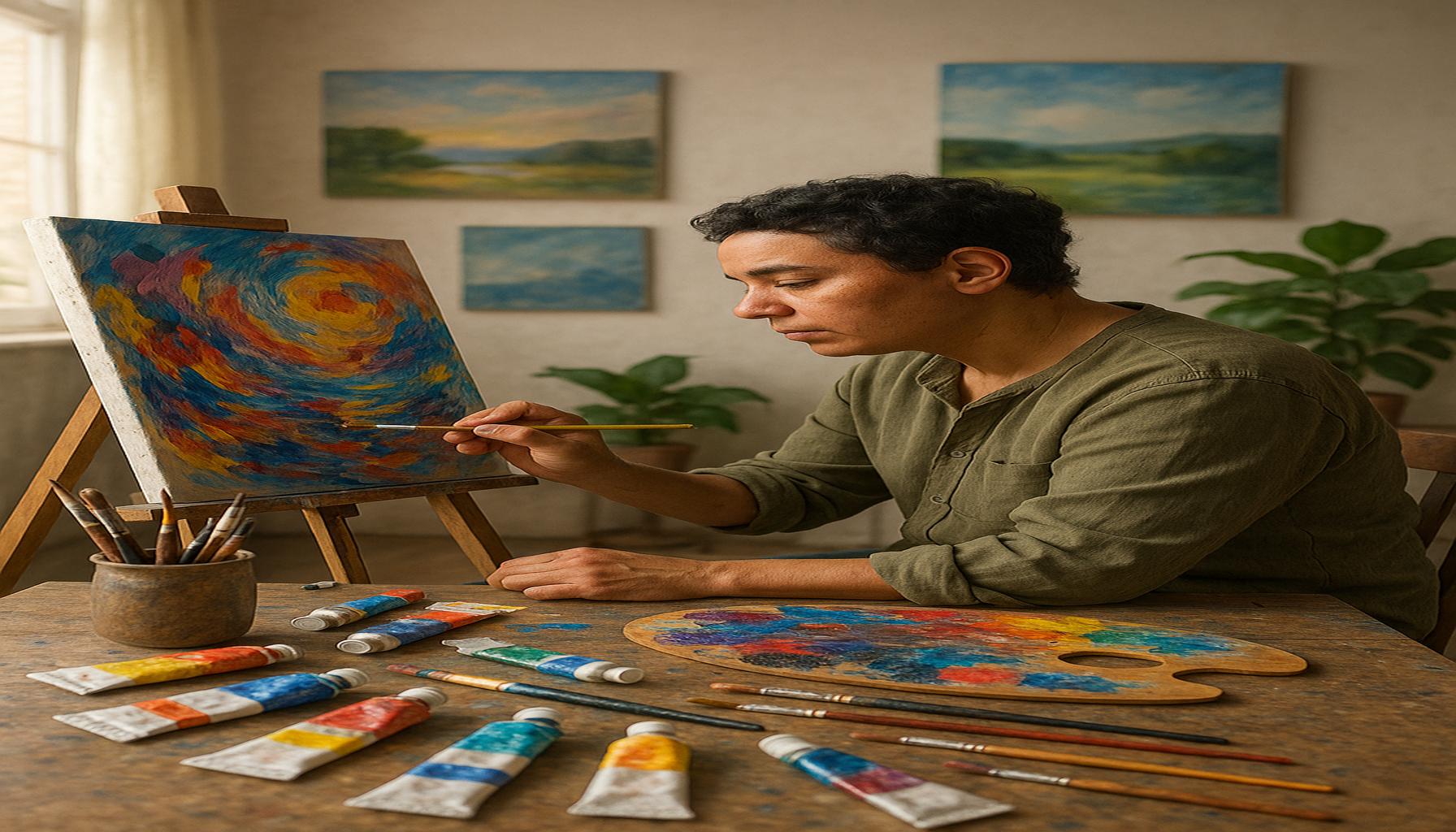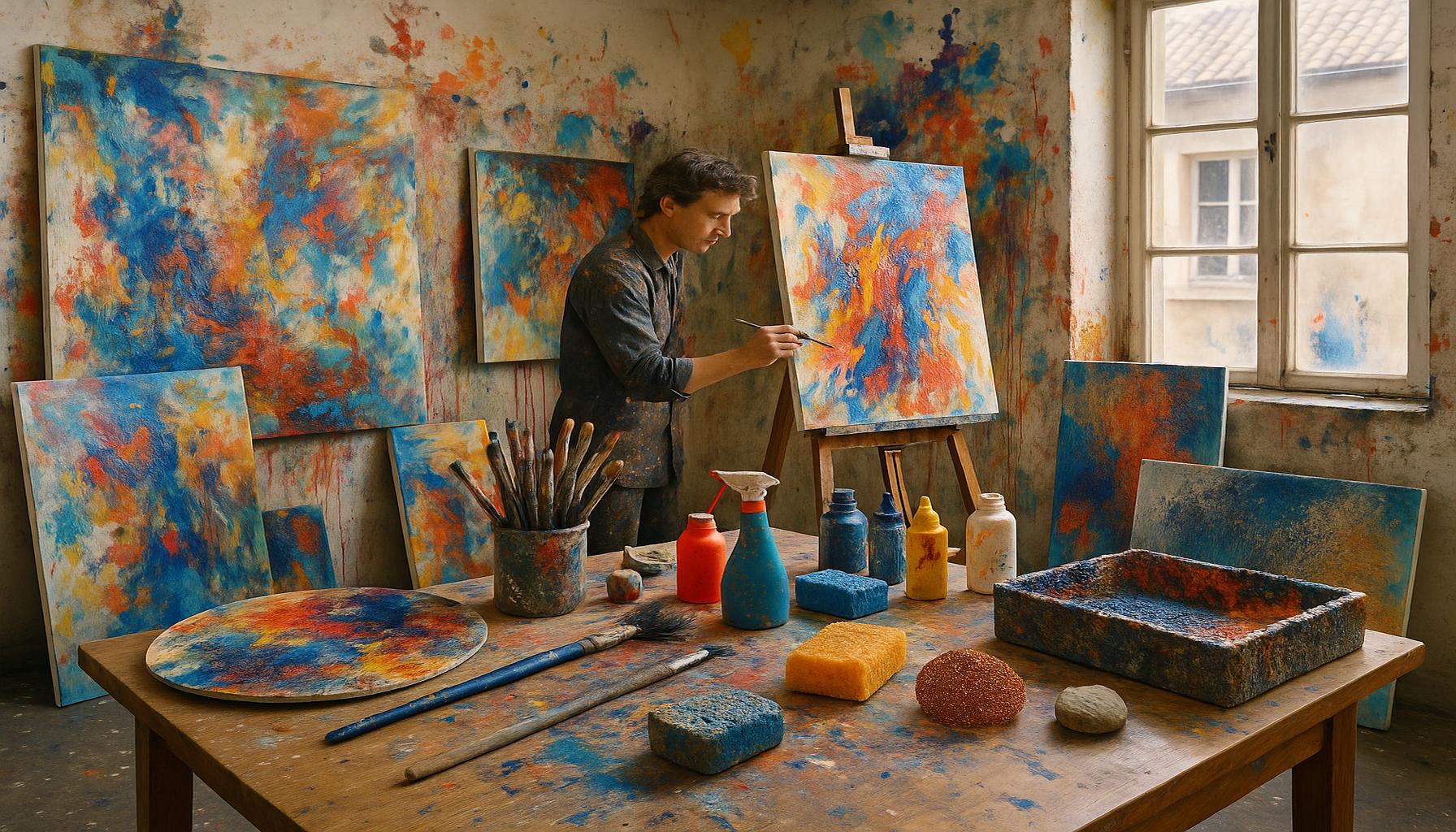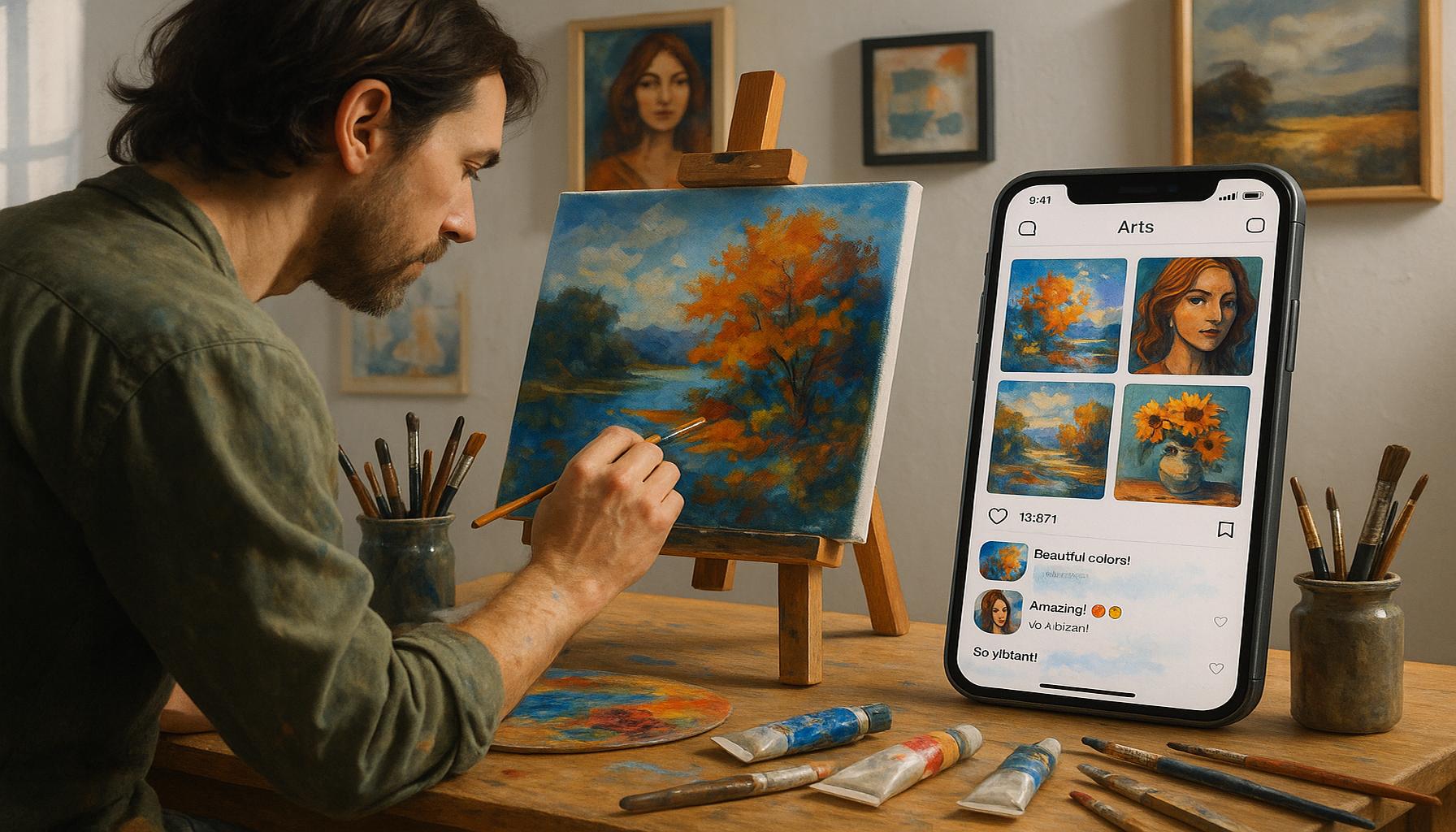Exploring Digital Arts Impact on Modern Creativity Tools Online Communities

Unleashing Creativity in the Digital Era
The landscape of creative hobbies has transformed significantly in recent years, particularly with the rise of digital arts. As technology advances, artists and creators now have access to an array of innovative tools and platforms that foster collaboration and creativity. This evolution is not just a shift in medium; it also redefines how we connect and share ideas within global communities.
In today’s digital age, online communities play a vital role in nurturing artistic expression. These spaces provide creators with support, feedback, and inspiration, helping to cultivate a diverse range of talents. The impact of digital art is profound, as it equips newcomers and seasoned artists alike with resources to enhance their creative processes.
Join us as we delve into the top five digital tools and communities that are shaping the future of modern creativity. Whether you’re an aspiring artist or a seasoned pro, these resources will unveil new possibilities for your creative journey.
Top 5: The Impact of Digital Art on Modern Creativity: Tools and Online Communities
In our digitally-driven era, the burgeoning world of digital art is making waves far beyond the realm of aesthetics. It is redefining every facet of creativity, spawning collaboration, and nurturing vibrant new communities. From innovative tools to expanding global reach, let’s explore the top five ways digital art is revolutionizing creativity. We’ll count down from the fifth most impactful element to the foremost influence.
5. Accessibility of Tools
One monumental shift brought about by digital art is the unprecedented accessibility of artistic tools. Traditionally, art creation was often burdened by high costs and the need for formal education in traditional mediums. However, the digital revolution has democratized this process. Today, there is an abundance of free and affordable software such as Krita, GIMP, and Inkscape, which demystify digital art creation for amateurs and experts alike.

In addition to software, the rise of mobile technology has revolutionized the art scene. Devices like tablets and smartphones, equipped with intuitive applications such as Procreate and Adobe Fresco, enable artists to create whenever inspiration strikes. This widespread access has effectively torn down barriers, allowing a surge in creativity from all walks of life.
The implications are significant; more people can now delve into digital art, disseminate their creations, and engage with others on platforms like Instagram and DeviantArt. This democratization has spawned a thriving online community where emerging artists gather, share feedback, and continuously improve, fostering an environment brimming with innovation and diversity.
4. Online Collaboration
The digital revolution has dramatically transformed how artists collaborate. Gone are the days when collaboration was confined by geography. In this interconnected digital age, artists from across the globe can contribute to the same project in real-time. Platforms like Google Drive, Trello, and Miro allow seamless collaboration, enabling creators to exchange ideas, provide feedback, and share techniques instantaneously, regardless of time zones.
This newfound ability for collaboration isn’t limited to small groups. Community-driven projects can engage a multitude of creators spanning various disciplines. Consider an online animation initiative as a prime example. Such a project might unite illustrators, voice actors, sound designers, and musicians, resulting in a comprehensive piece that epitomizes collective creativity. These collaborations give rise to art collectives, underscoring the essential role of teamwork in the dynamic landscape of digital art.
3. Expanded Audience and Global Reach
Thanks to the advent of the internet and social media, artists now possess the extraordinary ability to reach a global audience. Platforms like ArtStation, Behance, as well as social media sites like Pinterest and Instagram allow artists to showcase their work to an unlimited audience, potentially sparking the interest of fans and clients worldwide.
This expanded reach grants artists unprecedented opportunities. From commissioned projects to collaborations with well-known brands and networks, the digital showcase enables artists to cultivate their personal brands. Moreover, direct engagement with fans and the ability to sell artwork worldwide enhance their professional prospects significantly, turning local artists into internationally recognized figures in the art scene.
2. Community Building and Support
Digital platforms have become essential for creating supportive environments where artists and enthusiasts can gather. Various online spaces, including social media groups, forums, and dedicated art communities, offer venues for sharing, critique, and encouragement. Websites such as DeviantArt, specialized Reddit subreddits, and Facebook groups provide a wealth of resources and networking opportunities.
These communities act as breeding grounds for dialogue and mentorship, often hosting competitions that motivate members to refine their craft. Many artists find these connections invaluable, discovering a sense of belonging among peers who share the same passion. The result is meaningful personal and artistic growth, pushing individuals to transcend their creative limitations.
1. Innovation and New Artistic Forms
At the apex of digital art’s impact is its role as an agent of innovation. This transformative force continuously reshapes the landscape of creativity. Technological advancements in artificial intelligence, augmented reality, and pioneering animation methods have spawned entirely new genres and forms of artistic expression. For instance, artists using VR technology can create fully immersive experiences, pushing the boundaries of traditional storytelling.
AI-powered applications like DALL-E and MidJourney are redefining artistic processes, allowing artists to explore previously unimaginable ideas. These platforms offer an innovative playground where creativity and technology blur, fostering new storytelling forms and unique art genres. As these technologies evolve, so too does the scope of what we consider art, shifting the frontier of possibility ever forward.
In conclusion, digital art encompasses a rich ecosystem brimming with accessible tools, collaboration opportunities, and supportive communities that collectively drive creativity forward. As we continue to integrate these innovations into our creative processes, the impact of digital art will only deepen, inviting artists and audiences alike to explore new realms of possibility.
The realm of digital art continues to soar, resulting in a profound transformation of creativity in modern society. As technology develops, various tools and online communities foster innovative expression and collaboration. This vibrant ecosystem has not only democratized art production but also amplified the voices of artists across the globe. One of the notable advantages of digital art lies in the accessibility it provides. Artists no longer need expensive materials or traditional studio space; all they require is a computer or tablet equipped with software designed for artistic creation. Applications such as Adobe Photoshop and Procreate have become staples, allowing artists to manipulate images seamlessly, explore different artistic styles, and develop intricate designs with ease. Moreover, many platforms offer free trials or discounted versions, enabling aspiring artists to explore their skills without financial burden.In addition to technical advantages, the integration of digital art into modern creativity has led to the emergence of a multitude of online communities. Platforms such as Behance, DeviantArt, and ArtStation serve as invaluable hubs for artists to showcase their work, receive feedback, and cultivate their artistic identity. Through these communities, artists can connect with like-minded individuals, fostering collaboration and support. These interactions often lead to critical networking opportunities, mentorship programs, and even job prospects. Such connections signify the importance of community in nurturing creativity and enhancing artistic development.However, the digital art landscape is not without challenges. The ease of sharing art online leads to rampant instances of copyright infringement and artistic theft. Many artists struggle to protect their work in an environment where digital artwork can be easily replicated or modified without permission. This issue raises vital questions regarding intellectual property rights and the ethical considerations surrounding digital art distribution.Additionally, while online communities foster collaboration, they can also generate competitive tensions. Artists may feel pressured to conform to popular trends or approval ratings rather than pursuing their authentic artistic expression. This phenomenon, often referred to as “algorithm pressure,” can detract from the intrinsic joy of creativity, forcing artists to rely on external validation rather than their personal artistic journey. Despite these concerns, the evolution of digital art remains an undeniable force driving modern creativity. It continues to invite participation from diverse voices, expanding the definition of what art can be. The interplay of technology, community, and creative spirit remains a powerful catalyst for artistic innovation, inviting artists to explore uncharted territories and redefining the fundamental notions of creativity, collaboration, and expression in the digital age. In summary, the impact of digital art on modern creativity encompasses a multitude of perspectives, each linking to contemporary themes of accessibility, community, and the challenges that arise in this dynamic landscape. Artists now navigate a world ripe with opportunities while contending with new complexities, underscoring the evolving narrative of creativity in the digital era.
Frequently Asked Questions about Digital Art and Modern Creativity
What are some popular tools used by digital artists today?
Digital artists often rely on a range of specialized tools to bring their visions to life. Software like Adobe Photoshop and Procreate offer comprehensive features for painting and design, making them favorites among professionals and amateurs alike. For 3D modeling and animation, Blender and Autodesk Maya stand out due to their powerful capabilities and supportive communities. The rise of virtual reality has also introduced tools like Oculus Medium, broadening the horizons for immersive digital art creation.
How do online communities support the growth of digital artists?
Online communities provide a vital platform for digital artists seeking feedback, inspiration, and collaboration. Websites like ArtStation and DeviantArt enable artists to showcase their work to a global audience, while platforms such as Behance and Dribbble connect professionals and offer job opportunities. Many artists find mentorship and peer support in these communities, fueling creativity and fostering developments in digital art techniques.
In what ways has digital art influenced traditional art forms?
Digital art has introduced new techniques and perspectives to traditional art forms, encouraging a fusion of styles. Artists working in mediums like painting, sculpture, and printmaking have increasingly integrated digital tools to experiment with composition and color without the constraints of physical materials. This blending of methods has expanded the possibilities for creative expression, resulting in hybrid works that challenge and redefine the boundaries of conventional art.
Can digital art be considered ‘real’ art in the traditional sense?
The debate over what constitutes ‘real’ art is ongoing, yet digital art continues to secure its place within the artistic landscape. Just like traditional mediums, digital art demands skill, creativity, and dedication from its practitioners. With museums and galleries worldwide embracing digital exhibitions, it is clear that digital art is not only real but a driving force in shaping contemporary visual culture.
Conclusion
The transformative role of digital art in modern creativity cannot be overstated. At the heart of this revolution lie powerful digital tools that have democratized access to artistic expression, allowing both novice and seasoned artists to realize their visions with unprecedented ease and versatility. Platforms and software like Photoshop, Procreate, and Blender have become the paintbrushes and canvases of the digital age, opening up a world where the only limit is the creator’s imagination.
Moreover, the rise of online communities has fueled an environment ripe for collaboration, learning, and inspiration. These networks transcend geographical boundaries, connecting artists from all walks of life. Through forums, social media groups, and virtual workshops, creatives share knowledge, critique work, and inspire one another, creating a vibrant ecosystem that nurtures artistic growth.
The interplay between digital art tools and online communities has not only enriched individual creativity but also accelerated the evolution of the art itself. Trends emerge rapidly, influenced by diverse global contributions, and often spark new movements in the digital art space. Such dynamics encourage continuous exploration and experimentation, cementing digital art’s role in redefining what it means to create.
In conclusion, as digital art continues to blur the lines between traditional art forms and technological innovation, it lays the groundwork for a future where creativity knows no bounds. For those involved in creative hobbies, embracing these advancements can lead to unexplored avenues of self-expression and cultural impact. As we look to the future, the integration of digital tools and the strength of online communities will undoubtedly continue to shape the landscape of modern creativity, offering endless possibilities for anyone willing to explore them.


